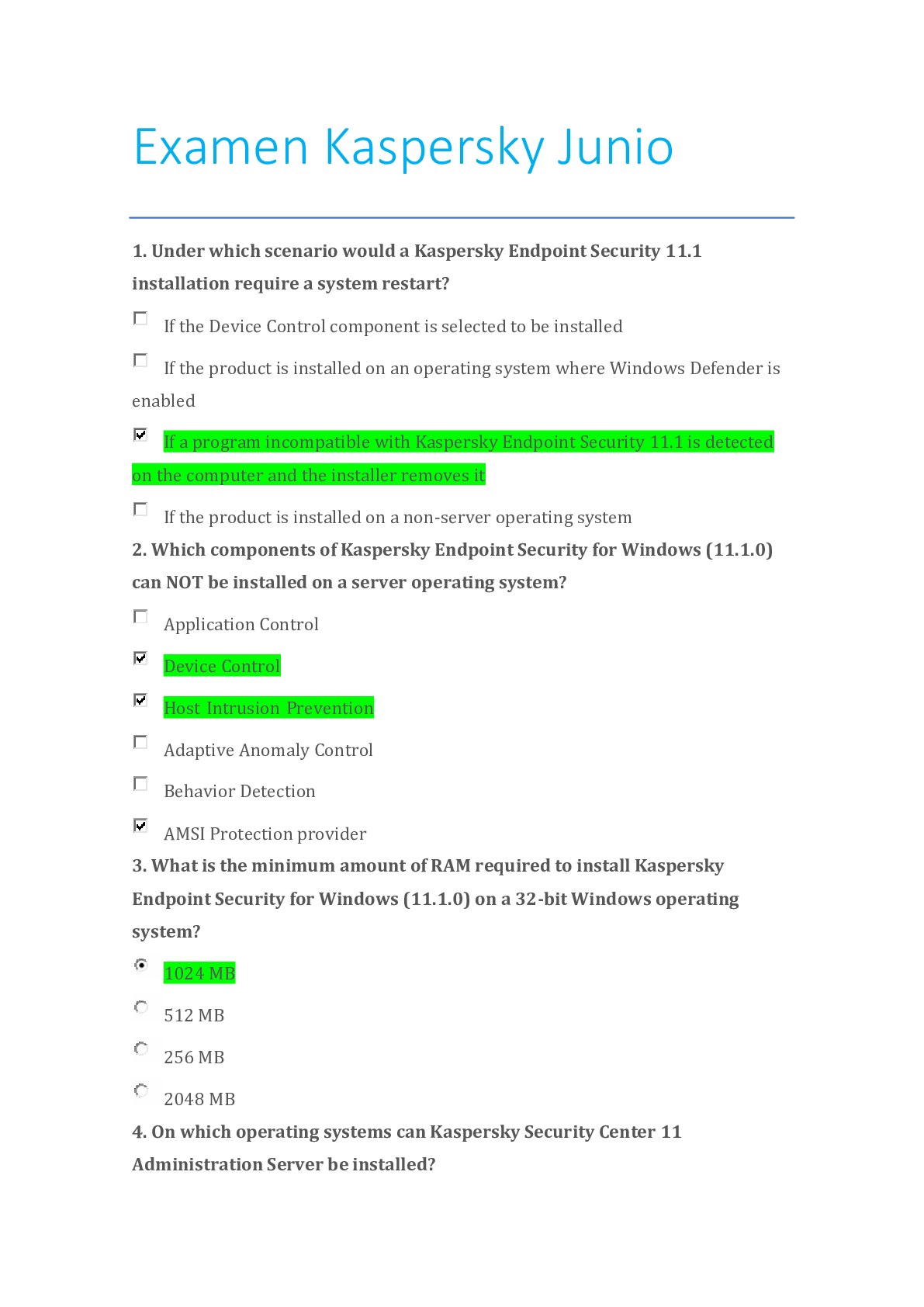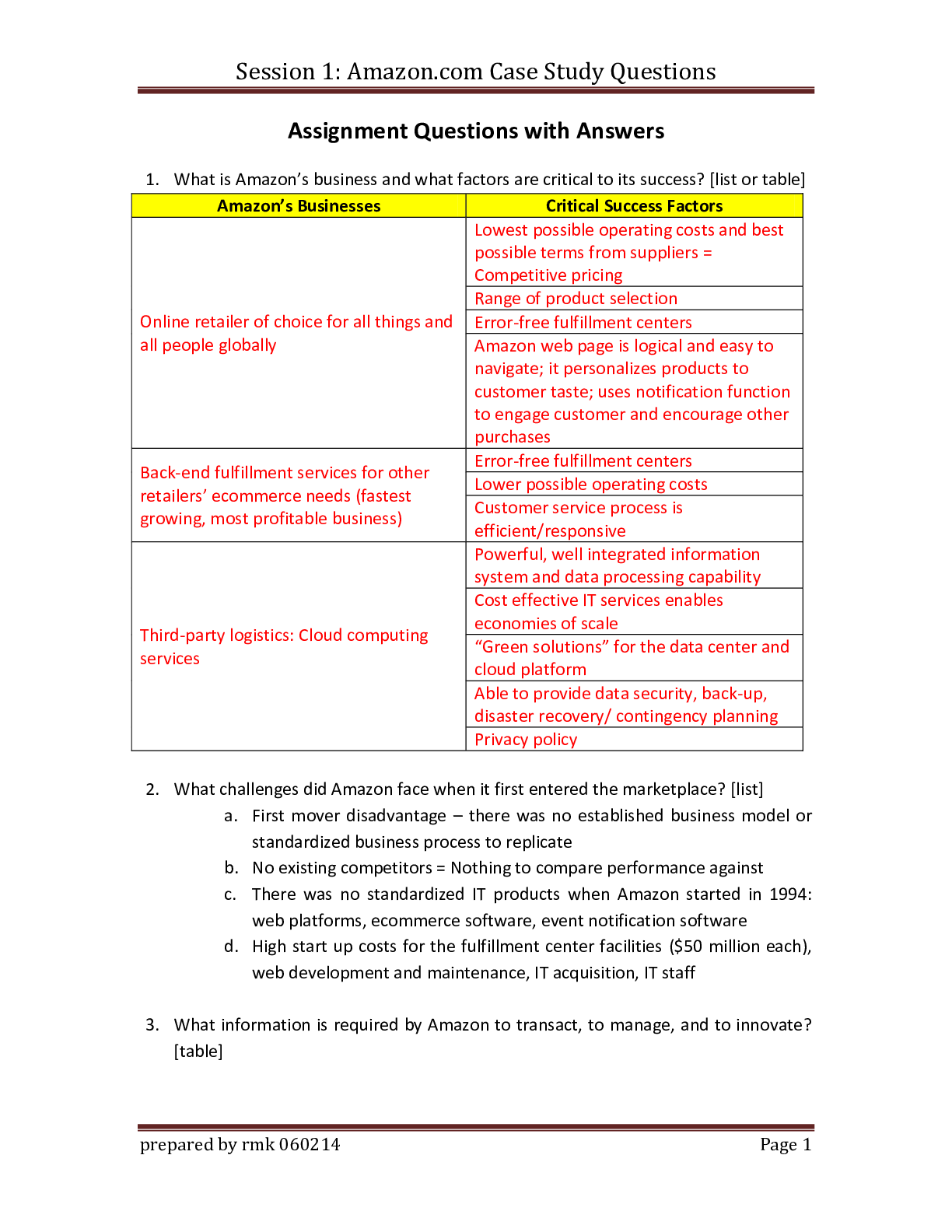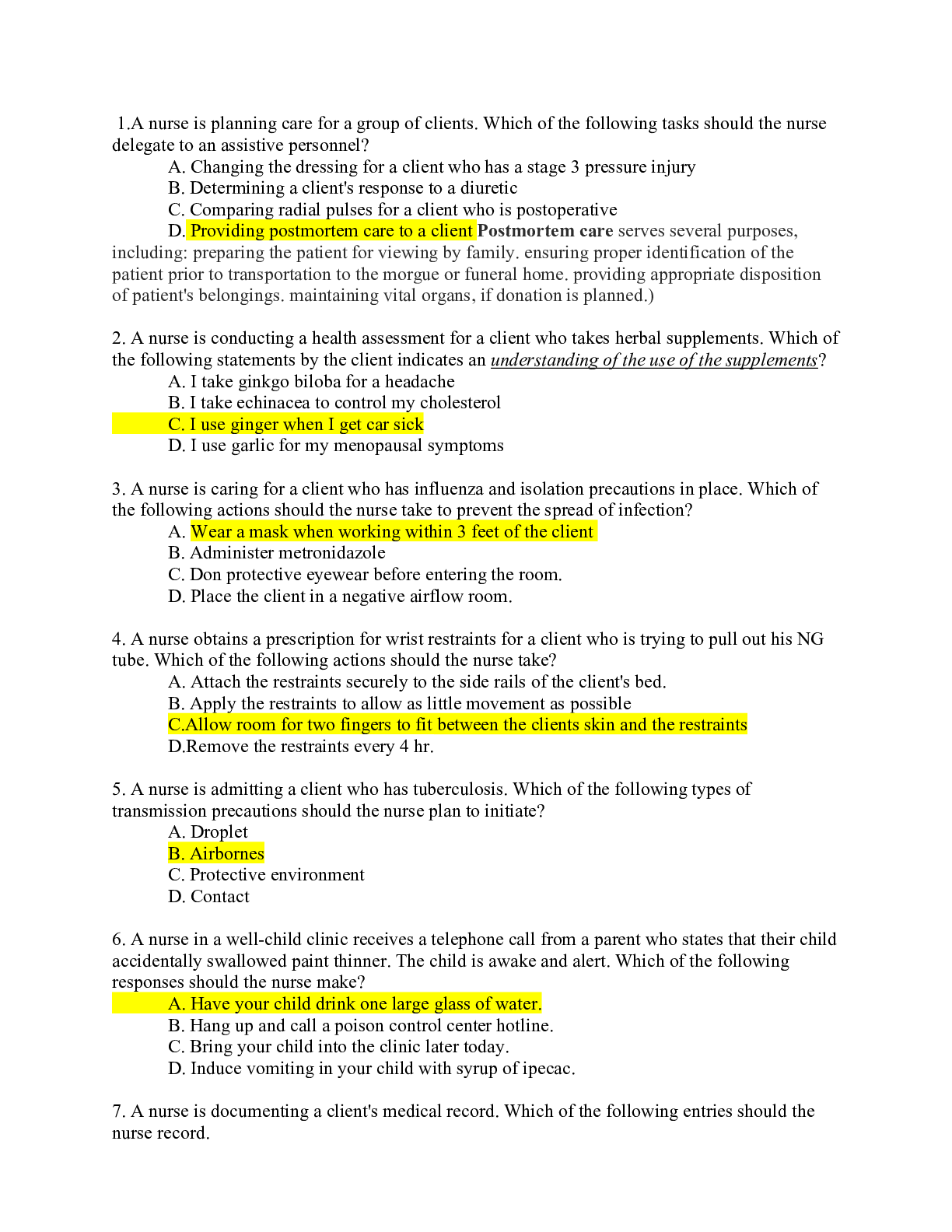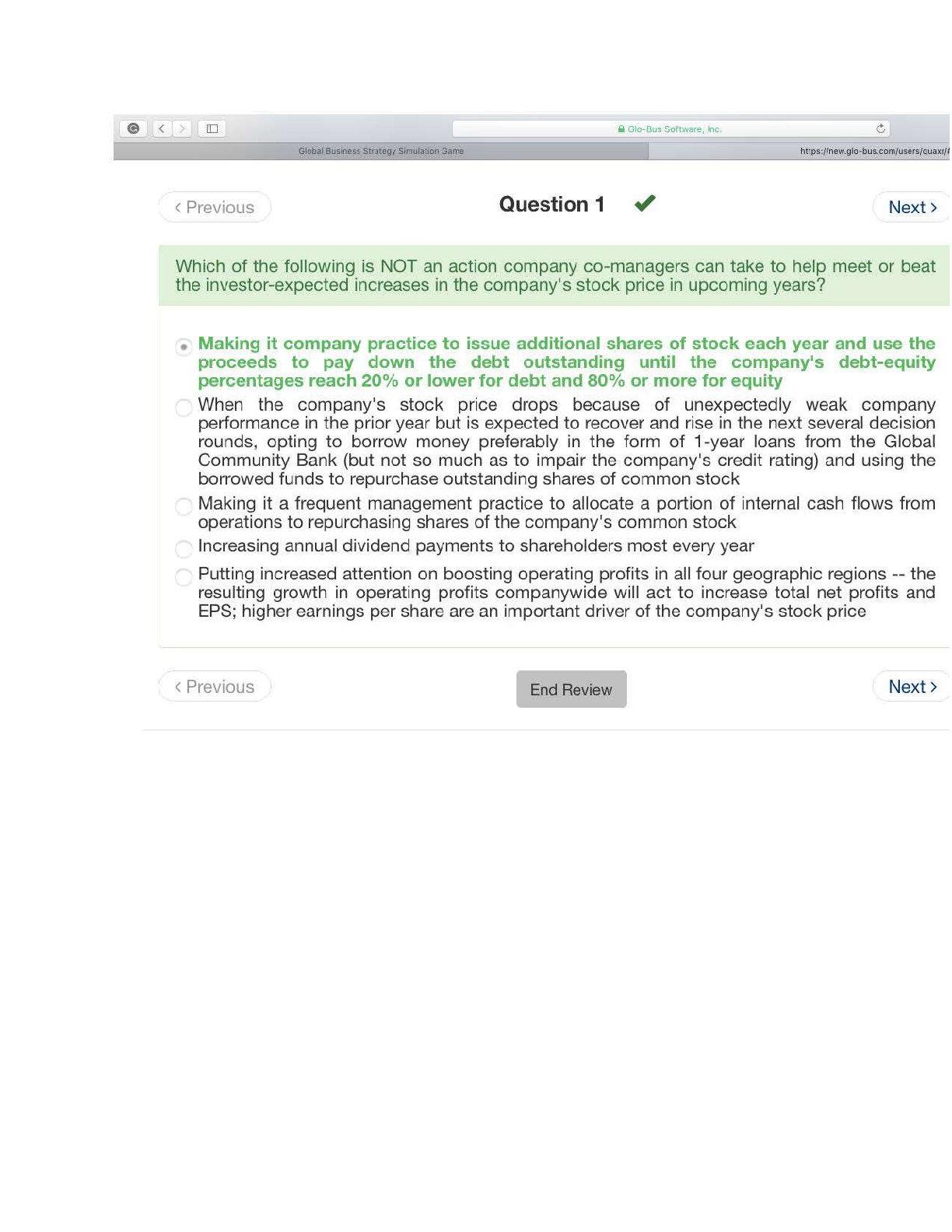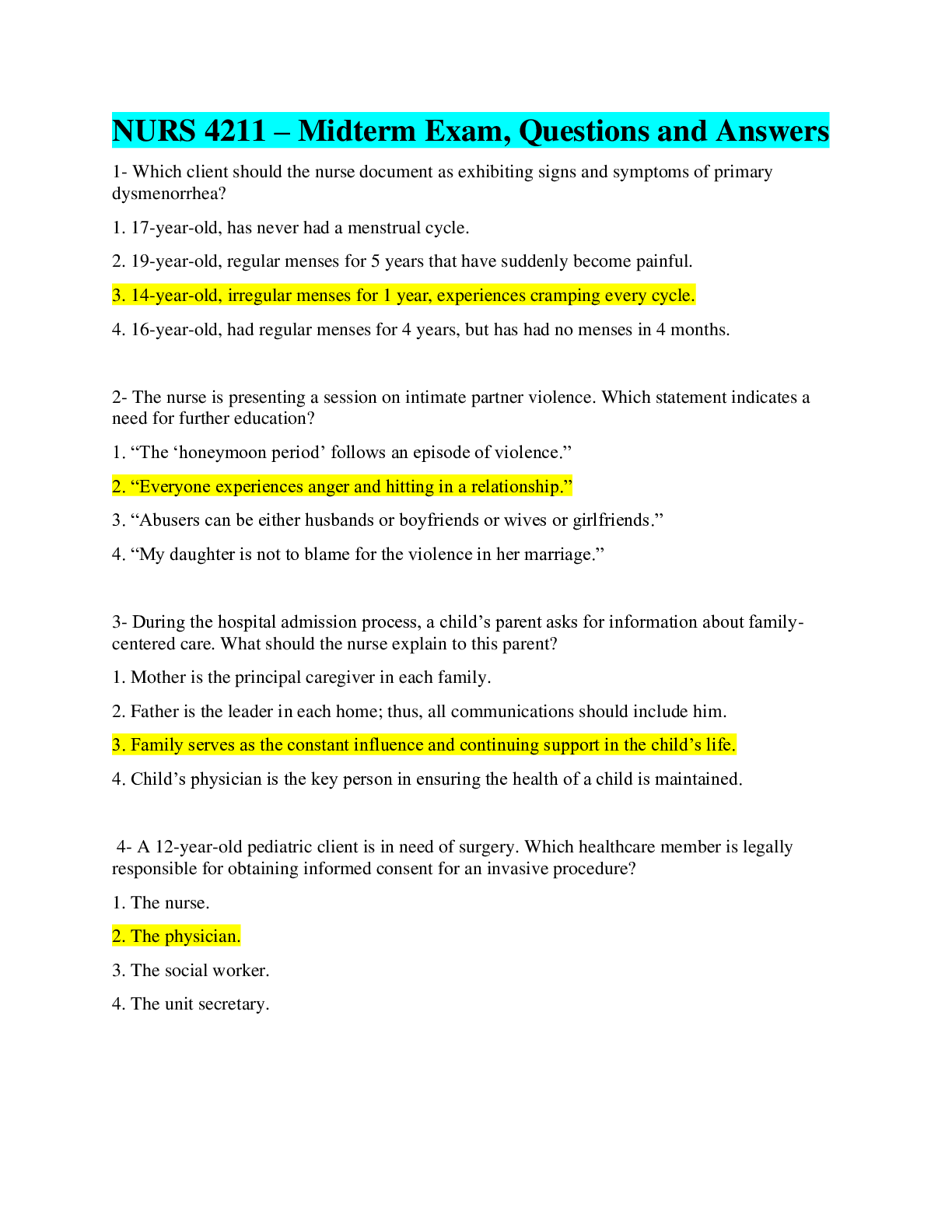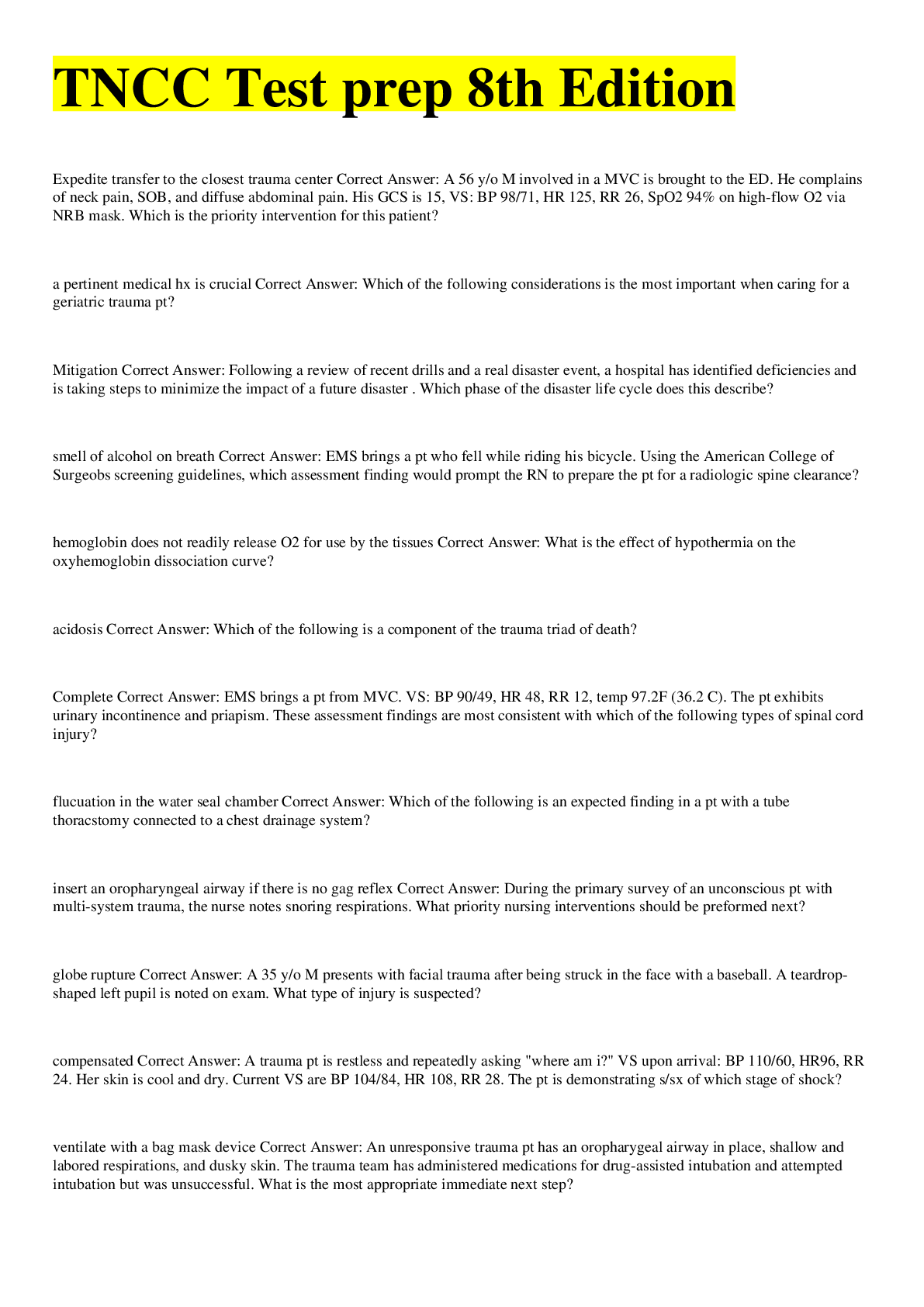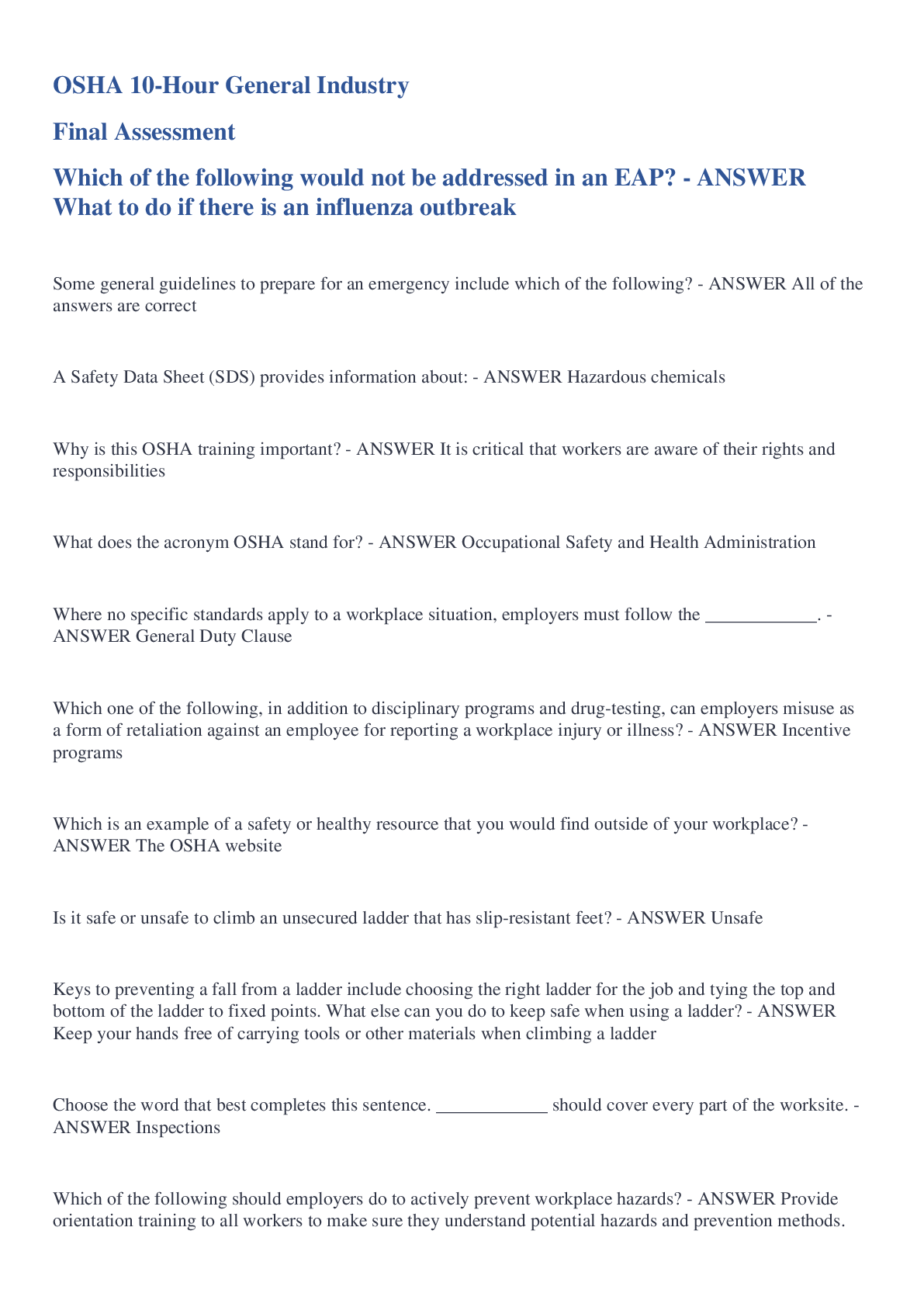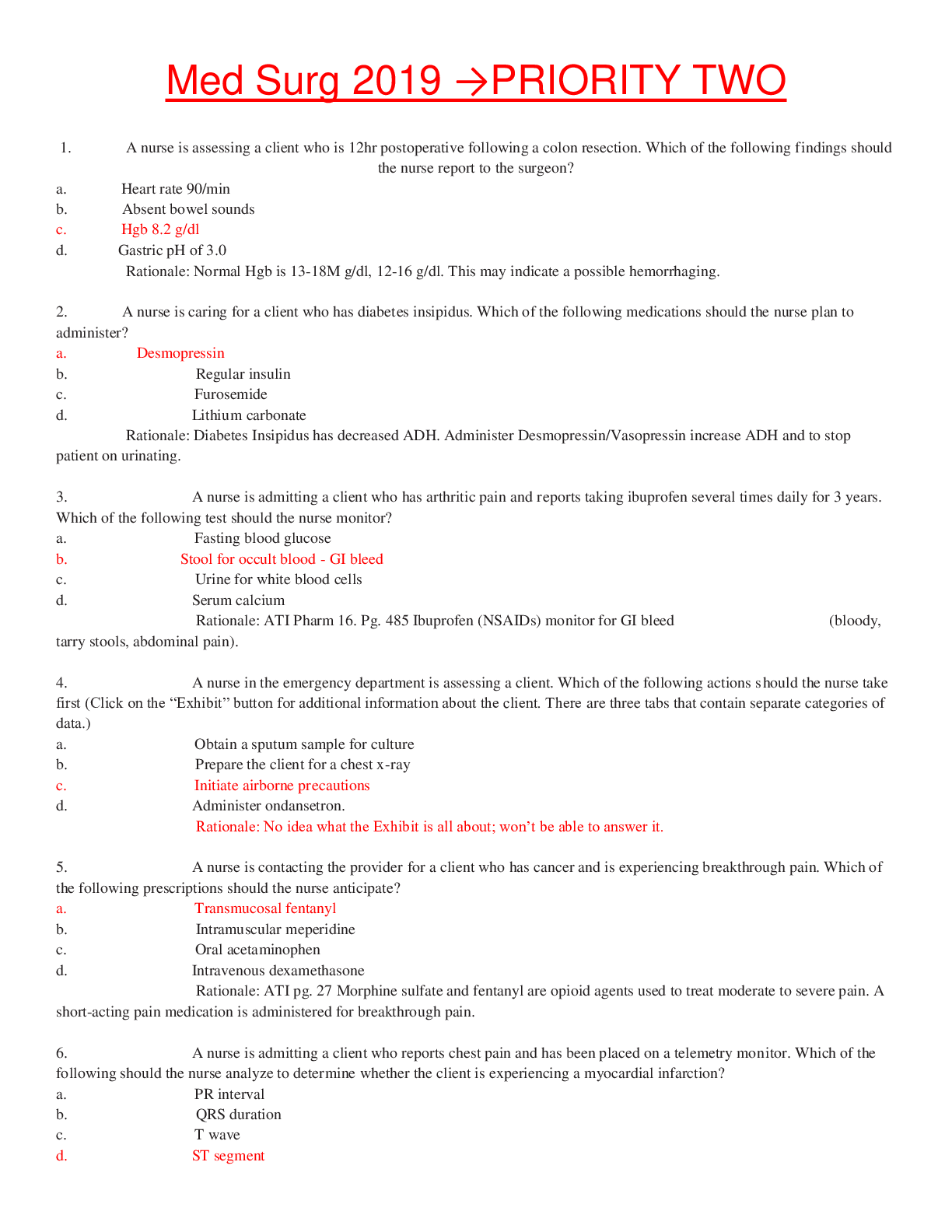*NURSING > QUESTIONS & ANSWERS > Chapter 25: Vital Signs PrepU, Questions and answers. 2022/2023 update (All)
Chapter 25: Vital Signs PrepU, Questions and answers. 2022/2023 update
Document Content and Description Below
Chapter 25: Vital Signs PrepU, Questions and answers. 2022/2023 update An 80-year-old client has a body temperature of 97°F (36°C). Which condition best accounts for this client's temperature re... ading? -hypothyroidism -advanced age -altered endocrine -function anemia - ✔✔advanced age It is common for older adults to have body temperatures less than 97°F (36°C), because normal temperature drops as a person ages. The nurse is preparing to assess a client's oral temperature. The nurse should plan to place the thermometer probe in which area of the client's mouth? -deep in the posterior sublingual pocket -superior to the tongue, with the tip touching the hard palate -along either upper gum line, adjacent to an incisor -in the inferior buccal space on either side of the tongue - ✔✔deep in the posterior sublingual pocket When the probe rests deep in the posterior sublingual pocket, it is in contact with blood vessels lying close to the surface. None of the other areas provides as much contact with blood vessels and therefore is not an appropriate location to place the thermometer probe.The nurse is taking the apical pulse of a 6-month-old infant. Upon completion, the nurse tells the parent the baby's pulse is 140 beats per minute. The parent is concerned, stating, "That seems kind of high!" The nurse responds: "Yes, this is termed tachypnea. I will let the doctor know right away." "Yes, it seems fast but actually, normal infant heart rates are 150-200 beats per minute so it is a bit slow." "I know it seems fast, but normal infant heart rates are 100-160 beats per minute." "Yes, this is termed tachycardia. I will let the doctor know right away." - ✔✔"I know it seems fast, but normal infant heart rates are 100-160 beats per minute." The average pulse rate of an infant ranges from 100 to 160 beats per minute. The nurse is taking a rectal temperature on a client who reports feeling lightheaded during the procedure. What would be the nurse's priority action in this situation? Remove the thermometer and assess the blood pressure and heart rate. Call for assistance and anticipate the need for CPR. Remove the thermometer and assess the temperature via another method. Leave the thermometer in and notify the physician. - ✔✔Remove the thermometer and assess the blood pressure and heart rate. Vagal nerve stimulation may occur when obtaining a rectal temperature. Vagal nerve stimulation can cause the pulse and blood pressure to drop significantly, causing the client to feel lightheaded; therefore, the thermometer should be removed immediately and the pulse and blood pressure assessed. The physician can be called after assessing the client. The temperature is not the priority at this time. Assistance for CPR would be determined if the client's condition worsens. Which client's blood pressure best describes the condition called hypotension? -The systolic reading is above 110 and diastolic reading is above 80. -The systolic reading is below 120 and the diastolic reading is below 80.-The systolic reading is below 100 and diastolic reading is below 60. -The systolic reading is above 102 and diastolic reading is above 60. - ✔✔The systolic reading is below 100 and diastolic reading is below 60. Hypotension is defined by a systolic pressure below 100 mm Hg and diastolic pressure less than 60 mm Hg. The top number refers to the amount of pressure in the arteries during the contraction of heart muscle. This is called systolic pressure. The bottom number refers to the blood pressure when the heart muscle is between beats. This is called diastolic pressure. Ideal blood pressure is less than 140/90. The student nurse is having difficulty feeling the pedal pulse of the client with a fractured leg. What should the nurse do next? -Ask another student nurse to check it for him. -Connect the client to the oxygen saturation monitoring device. -Use the Doppler ultrasound device. -Use the Bell side of the stethoscope to listen. - ✔✔Use the Doppler ultrasound device. Peripheral pulses that cannot be detected by palpation may be assessed with an ultrasonic Doppler device. A conductive gel is first applied to the skin to reduce resistance to sound transmission. The transmitter of the device is then placed over the artery to be assessed. High-frequency waves directed at the artery from the transmitter are disturbed by the pulsating flow of blood and are reflected back to the ultrasound device. The sound disturbances (Doppler shifts) are amplified and heard through earpieces or a speaker attached to the device. The bell effect is created by light pressure on the stethoscope. Using the bell will not facilitate palpation but an auditory assessment. The nursing student should be familiar with other assessment devices such as the Doppler and not asking another nursing student to assess. Connecting the client to the oxygen saturation device does not assist in the assessment of pedal pulses. [Show More]
Last updated: 1 year ago
Preview 1 out of 18 pages
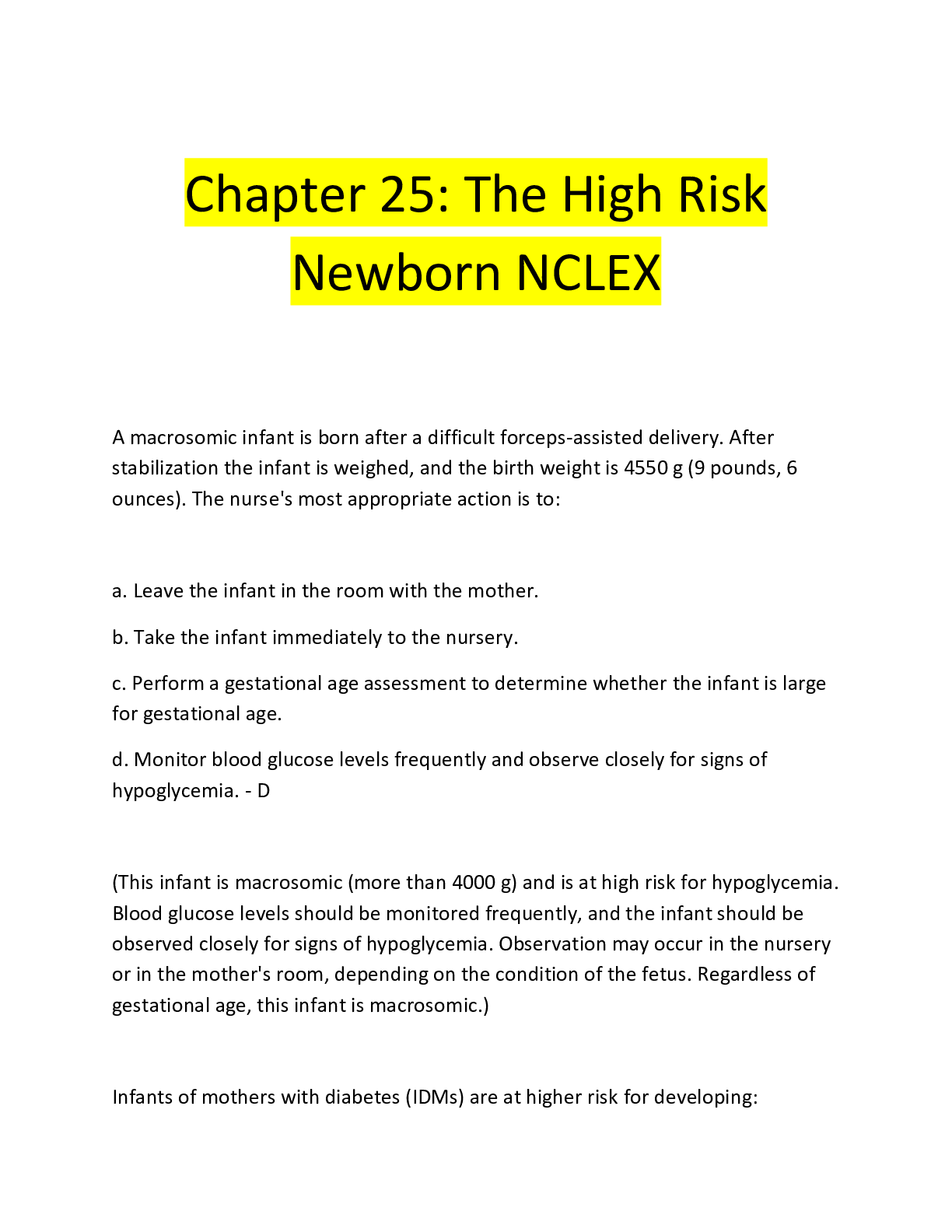
Reviews( 0 )
Document information
Connected school, study & course
About the document
Uploaded On
Oct 21, 2022
Number of pages
18
Written in
Additional information
This document has been written for:
Uploaded
Oct 21, 2022
Downloads
0
Views
168



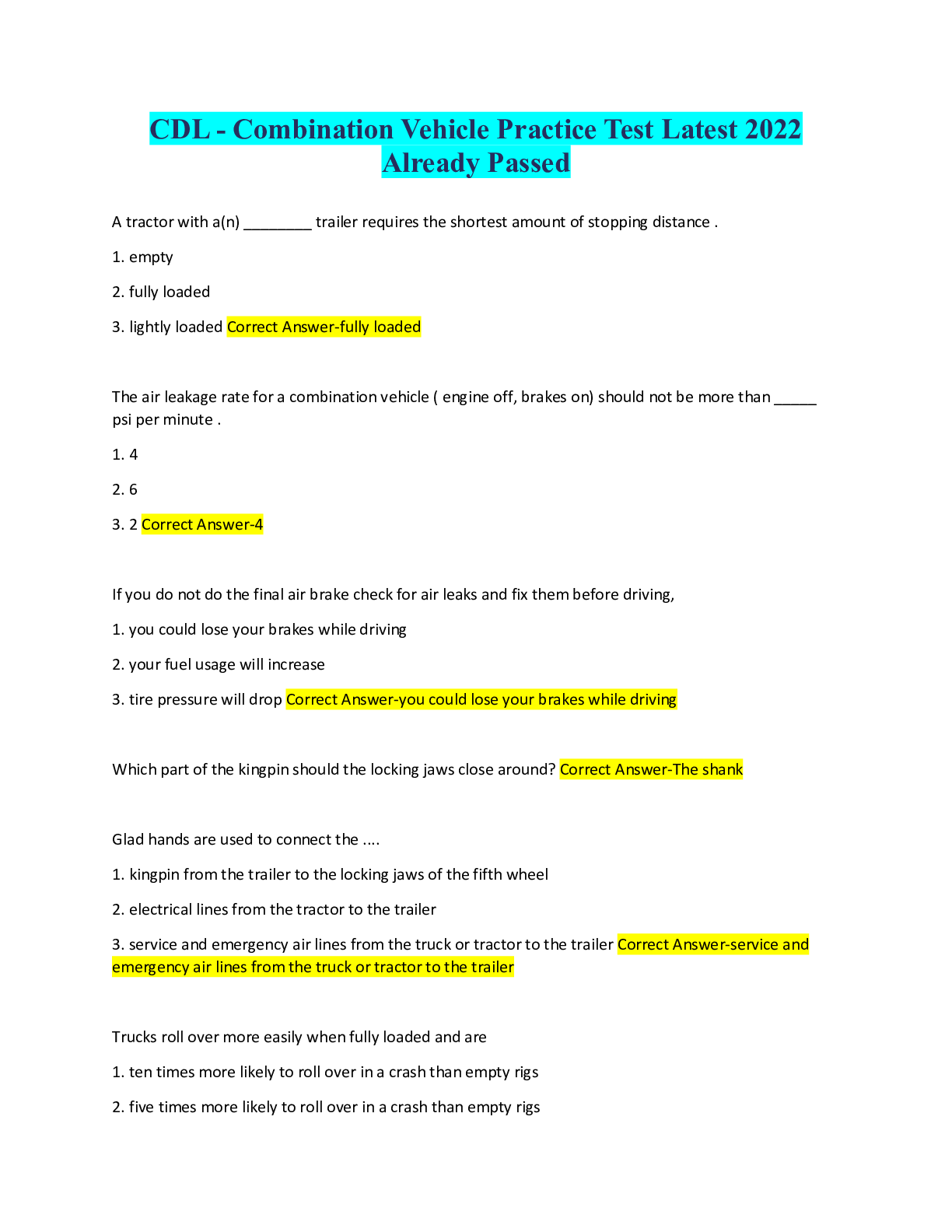
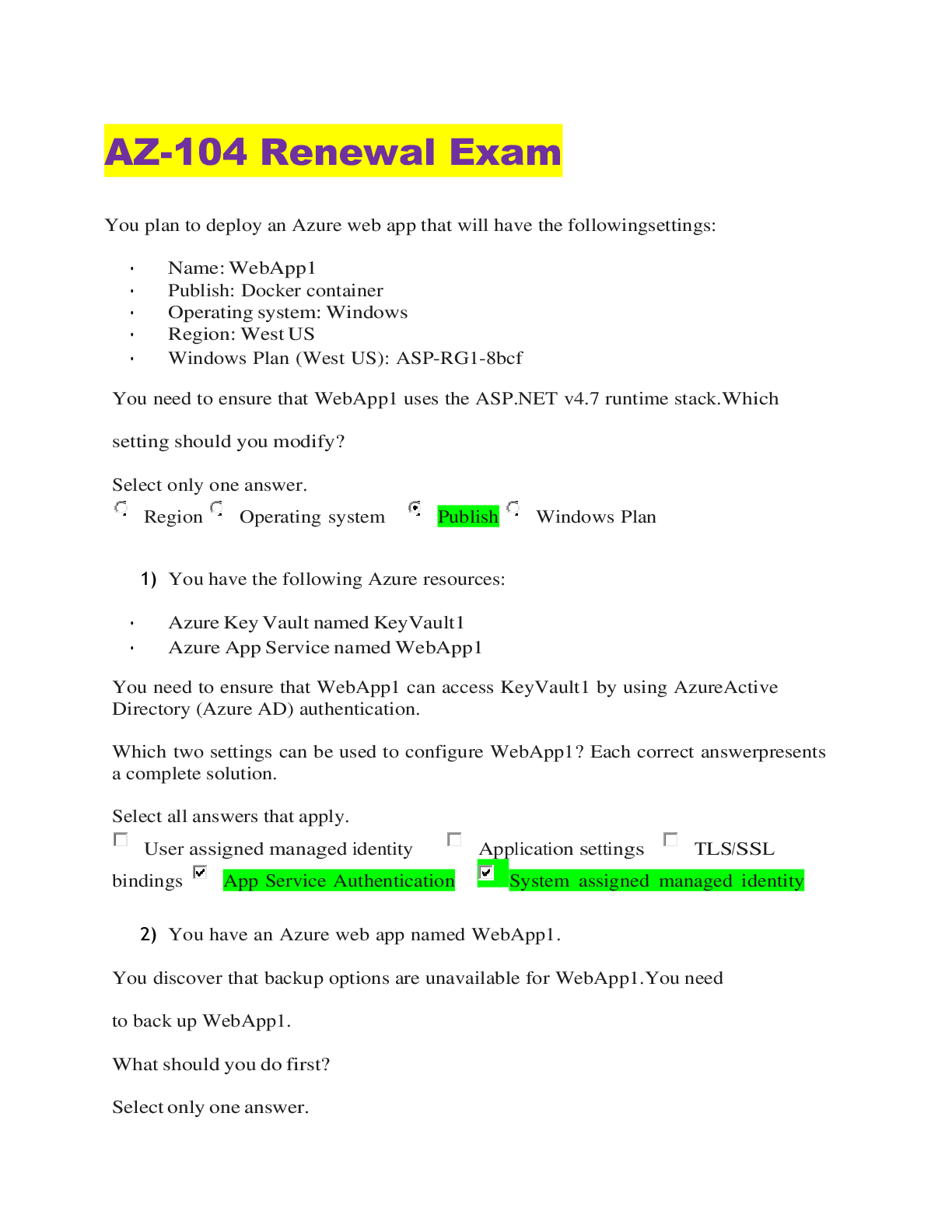
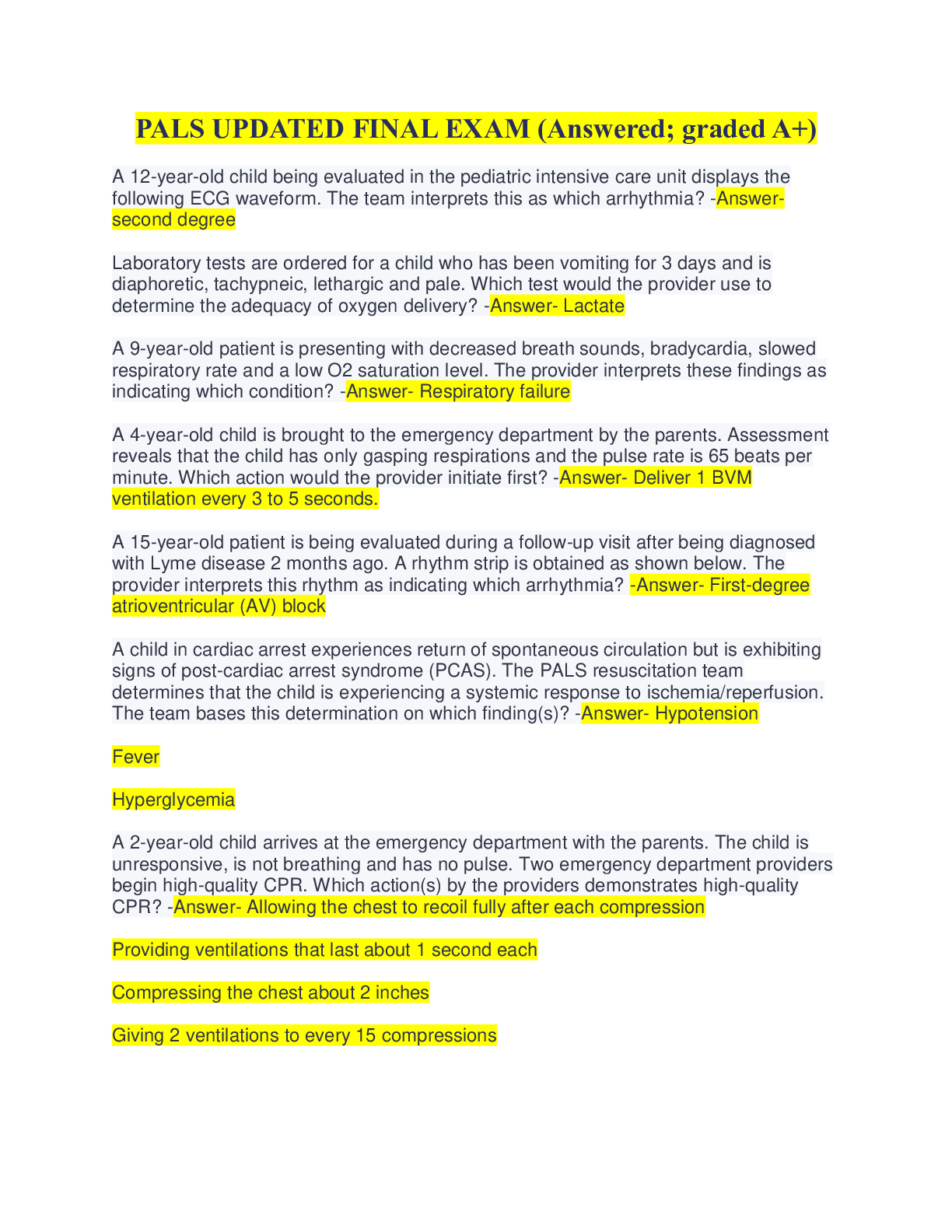
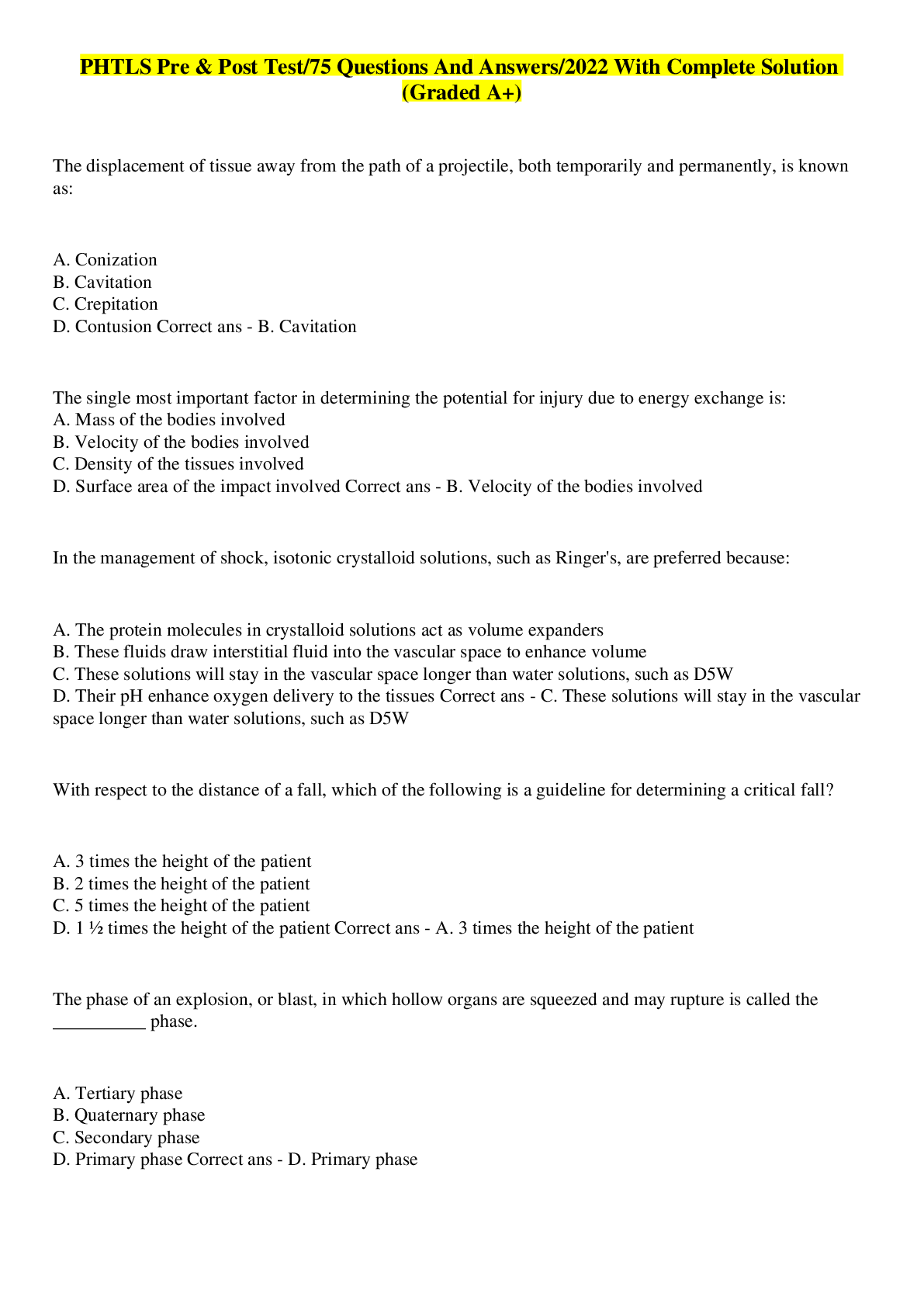

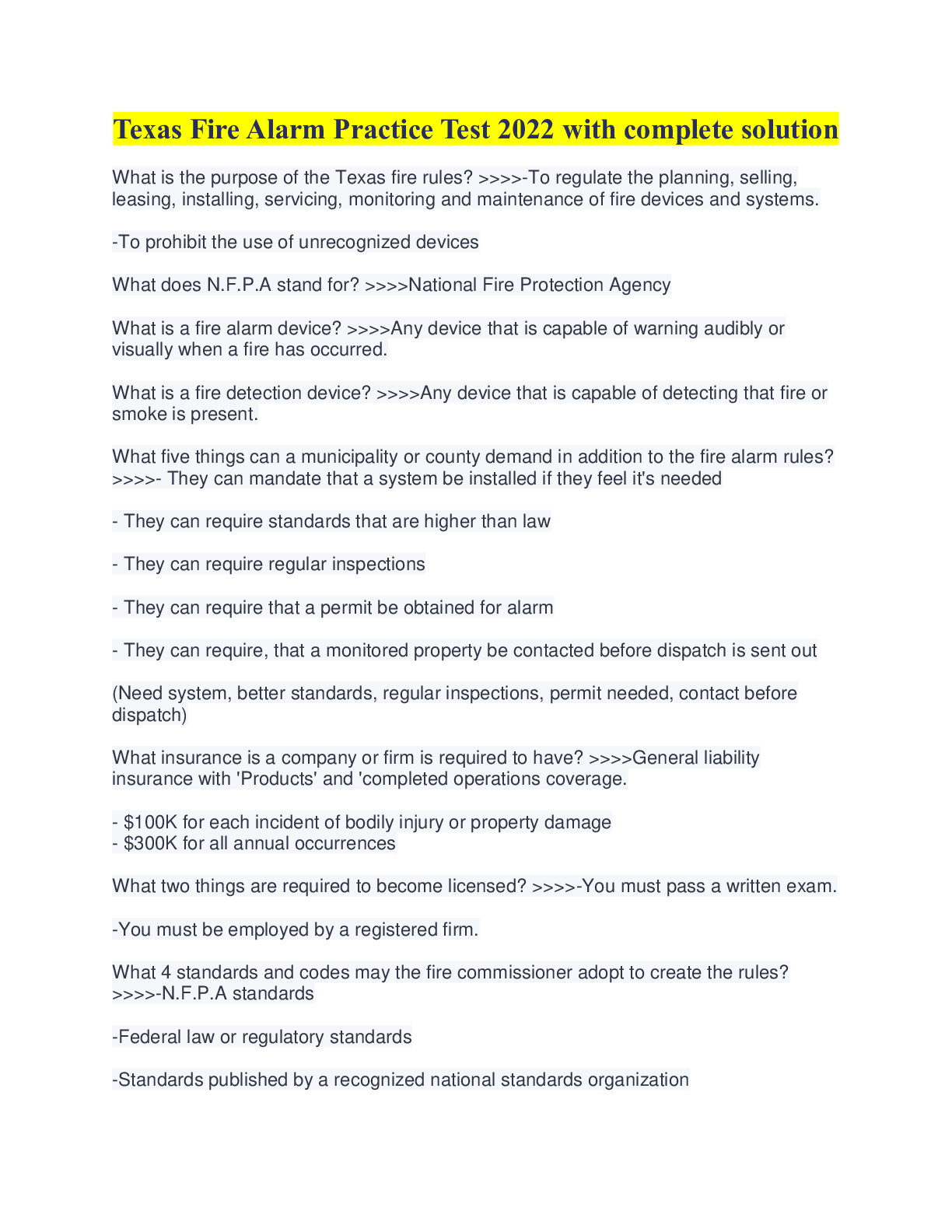
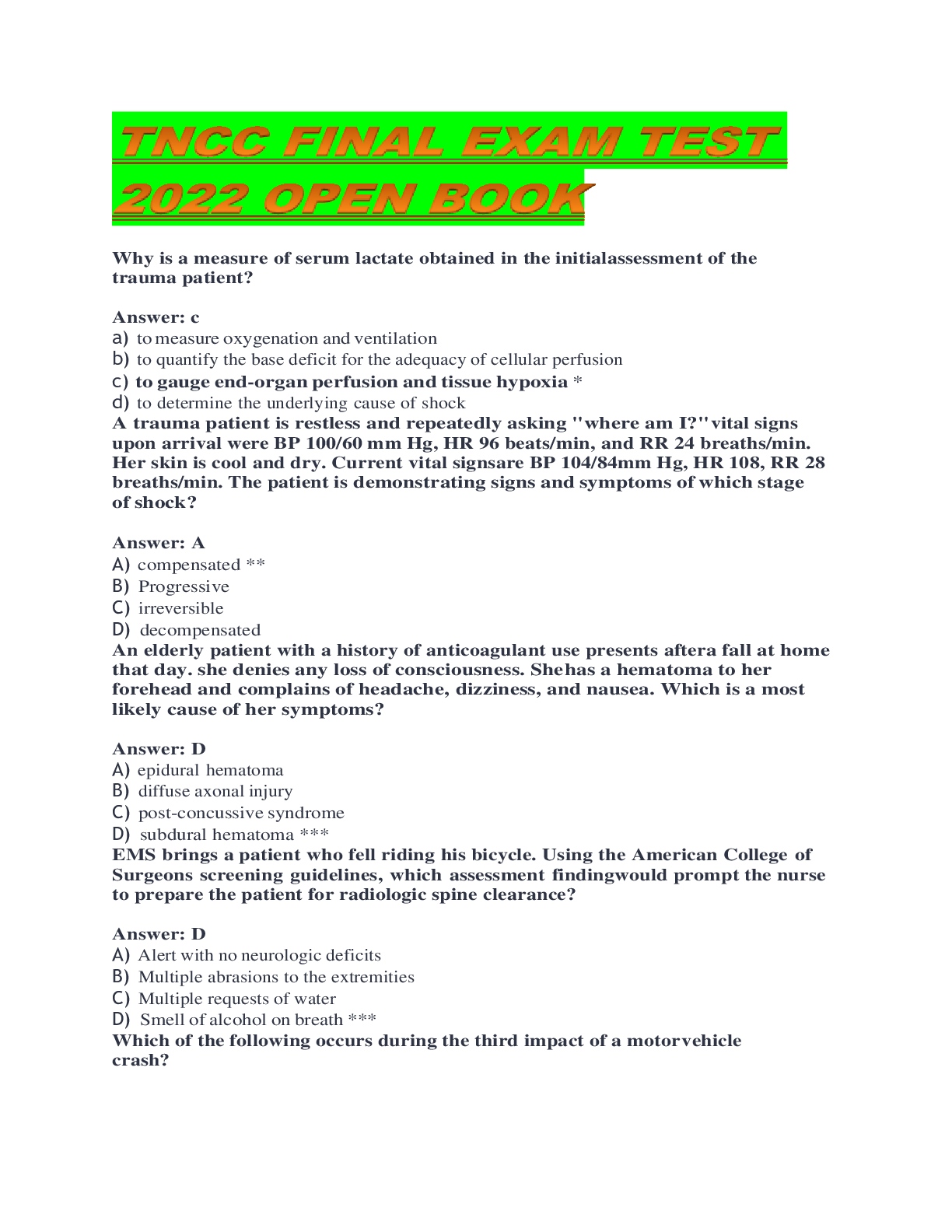
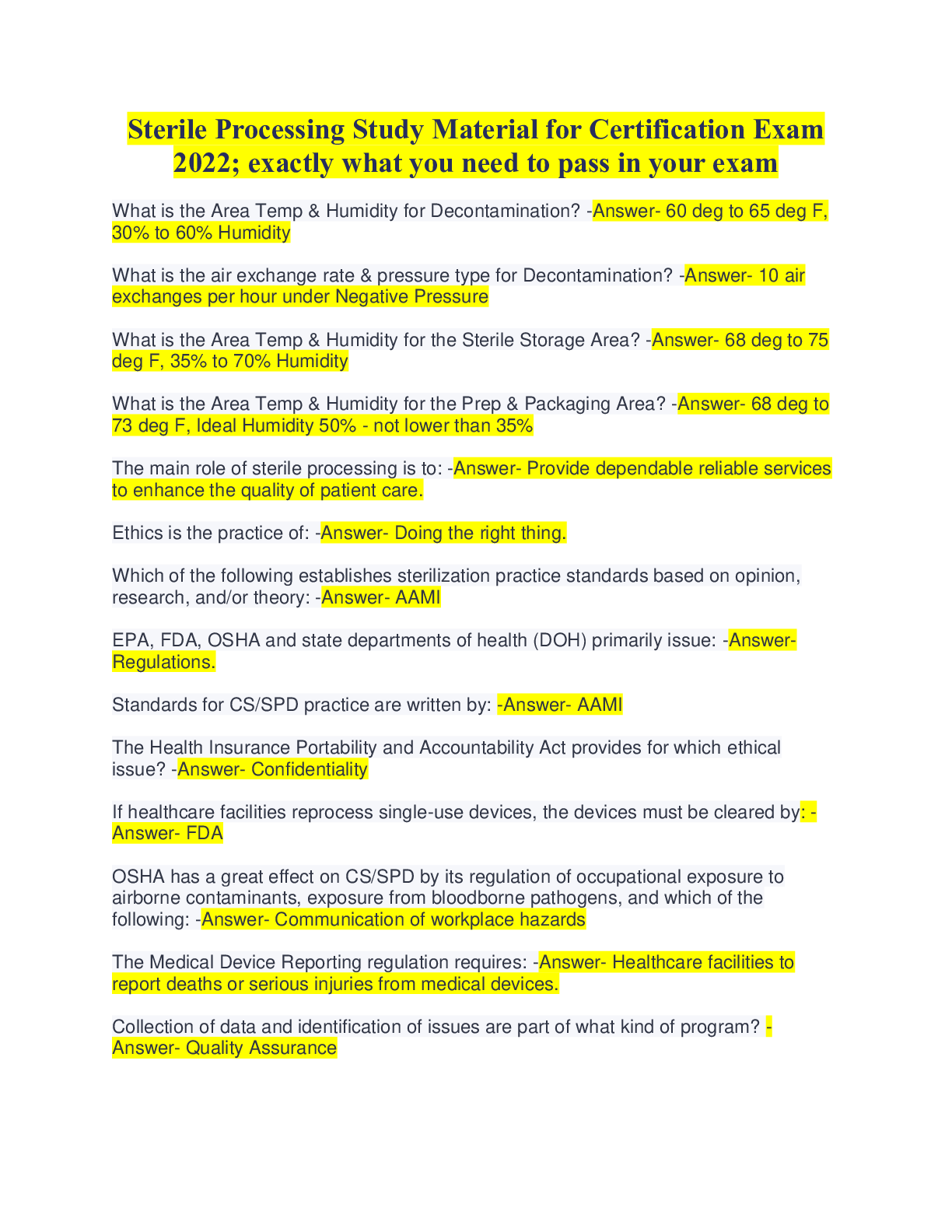


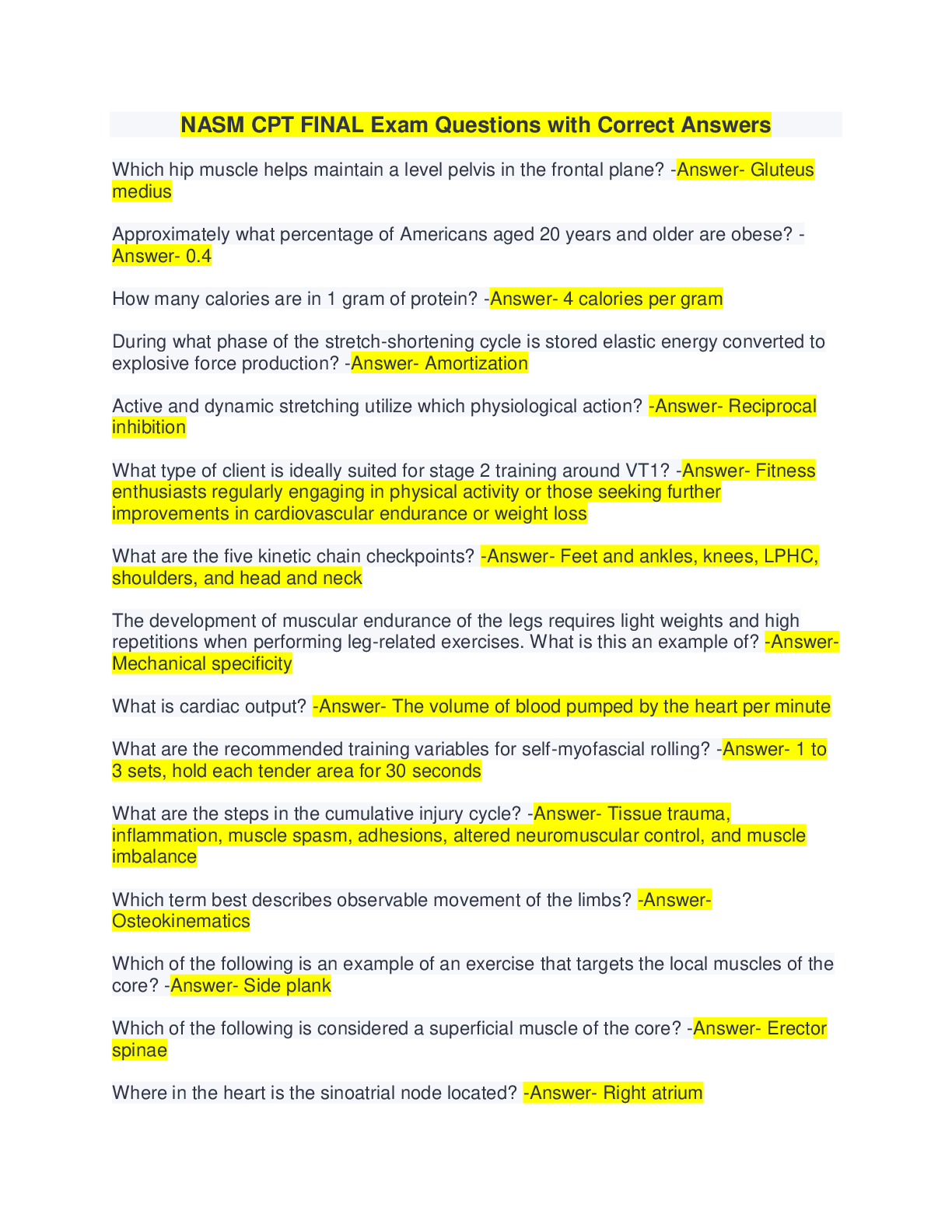


.png)

.png)



